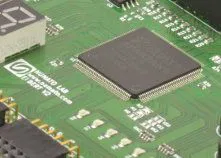Table of Contents:
As the triumphant return of a board acclaimed for industrial and multitasking applications, new Arduino Portenta H7 Lite delivers performance without compromising on the base version and is even better suited to the needs of developers.
The launch of the Arduino Portenta H7 at Botland online store was often signed with the term miracle, because… such a good omen means the word portenta in Latin – and Arduino cares about its Italian roots, which are the closest to Latin in Europe. It was created for programmers who want to take advantage of the Arduino Portenta H7’s computing power, but don’t need all the functionality of the base version – at least at the implementation stage, because you can choose an advanced version of the Arduino platform later. The Portenta H7 Lite is primarily cost-effective – it’s a solution designed for complex environments where radio communication is not appropriate or possible, and everything is done using Ethernet.

Features known from the original Arduino Portenta H7
- Dual-core. Two ST front-end STM32H747XI processors with 480 MHz core for multitasking, the same as in the original Arduino Portenta H7. It can be said that the most revolutionary and presented as a leading asset feature of the original has been retained in the H7 Lite.
- Using the latest in artificial intelligence. The board is powerful enough to handle AI finite automata.
- Wireless connectivity module.
- Support for programming in microPython.
Arduino Portenta H7 Lite – what for?
- High-performance industrial machinery
- Laboratory equipment
- Computer vision
- PLCs
- Industrial user interfaces
- Robot control
- Dedicated desktop computer
- Fast boot calculations (ms)
Arduino Portenta H7 Lite – specification
On the top (upper) side of the board there are Arduino MKR-compatible headers, ESLOV connector known from Arduino MKR overlays, USB-C port, power management chip, battery connector, QSPI Flash memory, and main STM32H747 processor. On the underside, there is an 80-pin connector.
The changes include communication, connectivity and security solutions. In H7 Lite version we are proposed with Ethernet (PHY, physical layer) without BLE and WiFi characteristic of the original. Lite gives up video output and NXP SE0502C2 cryptographic chip of the original – instead, only ATECC608 microchip remains.


The dimensions of 66 x 25.4 mm, the operating temperature of (-40)°C to 85 °C ([-40]°F to 185°F) and the RST STM32H747XI processor equipped with an Arm® Cortex®-M7 core at up to 480 MHz remain unchanged. So the changes are in communication, connectors and security solutions. In H7 Lite version we have Ethernet (PHY, physical layer) without BLE and WiFi that characterized the original. The Lite also lacks the video output and NXP SE0502C2 cryptographic chip of the original – instead, only the ATECC608 microchip remains.
For Portenta H7 Lite, Arduino points to the Teensy 4.1 board as its competitor – a complete USB-based microcontroller development system in a very small form factor capable of many types of projects.
Pre-order sale of the Arduino Portenta H7 Lite launches at Botland online store soon, and in the meantime, it’s worth to check out the other categories of the platform.

How useful was this post?
Click on a star to rate it!
Average rating 0 / 5. Vote count: 0
No votes so far! Be the first to rate this post.



















